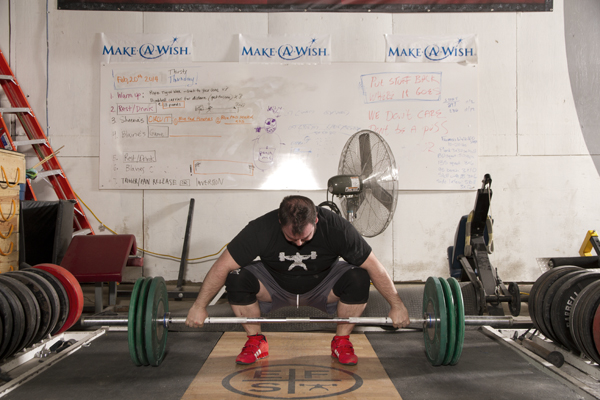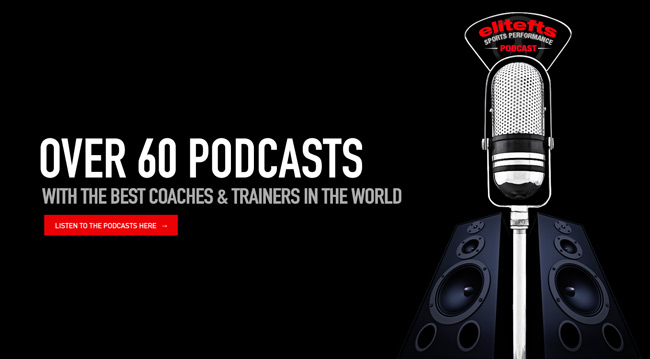
First of all, I am not an expert at Olympic Lifting. I am also not a great Olympic weightlifter myself. Only one But, I do feel I have a skill-set and experience to provide coaches some tools to help their athletes improve at these movements.
From 1998 until 2003, we implemented the power clean (from the hang and the floor) in our programming. I made a lot of mistakes as we would have our athletes perform these lifts because, well, everyone else did those lifts.
One of the most important steps for any coach is to learn to ask why and think for yourself for the benefit of your athletes.
So here I am at Clarion for 3 years, Allegheny for a year and even for my first year at Denison teaching and coaching the Olympic Lifts with my WSBB mindset and my Duel FB Coach Role.
The problem with my entire approach was three-fold:
- I didn't have a solid system of regressions or progressions. If an athlete couldn't hit the positions, I had no answer.
- I didn't have an extensive enough understanding of why technique mistakes were happening .
- I didn't have a solid process of knowing how to address those discrepancies. Was there an acute fix that can be fixed with cueing? Was it a longer term strategy to address imbalances or immobility?
It wasn't until I got my USAW Sports Performance Coach Certification in combination with visiting other coaches where I started to connect the dots. I interned with Shawn Griswold at Tulsa the following summer and it started to come together. I still have a lot to learn but the more I ask why, the more question I am pursuing to answer. Sometimes those questions lead to other questions, but constantly seeking and teaching is learning.
Now I am not even saying that incorporating Olympic lifts are even a necessity in a productive training program. There are plenty of ways to develop explosive strength without weightlifting movements. If you are going to program them, you need to ensure several key components of your situation.
Anytime you are programming Olympic lifts, always ask these questions.
- Do I have the knowledge base to teach the bio-mechanical positions and the movements?
- Do I have the experience with identifying and addressing technique discrepancies while instituting corrective strategies?
- Do I have enough qualified coaches for the number of athletes I have at one time in my facility?
- Do I have enough time during the training session, training week, and training cycle with my athletes to ensure technical proficiency of the lifts?
- Do I have enough space and enough stations to safely accommodate novice athletes performing explosive movements (some of them overhead)?
- Do I have the proper equipment (the correct bars, bumpers, platforms, or appropriate flooring) for my athletes to execute these movements?
- Are my athletes' chronological, biological, and training ages all conducive of productive training sessions using Olympic weightlifting movements?
Troubleshooting the Olympic Lifts for Athletes
Using Olympic lift variations for athletes is one way to develop explosive power. One thing is certain, coaches usually have less time to prepare their athletes for competition and Olympic lifts are only part of that preparation. Compared to an Olympic weightlifting, athletes will have less time to perform and perfect the clean and snatch variations. Mostly, it was about time available for the specific movements. On average, we had about 15-20 minutes per week for about 6-30 weeks per year for the clean variations specifically. In some cases that is less than 2 hours per year where they are supervised by myself performing cleans.
Remember, you aren't coaching Olympians. You are coaching athletes who are being evaluated on their ability to play a specific sport. Cleans and Snatches are just GPP for the athlete.
Here are a few quick tips that may help coaches provide some quick fixes in a team setting.
Inability to achieve the proper starting position
Aside from some issues with mobility or muscular imbalances; athletes need to be taught how to achieve the proper starting position. This is a different process in terms of the hang versus the floor versus the blocks. Take time to teach the "power position" as it will carry over to most of your lifts.
Teaching the Athletic Power Position
The hips come up before the shoulders
Concentrate on pushing the feet through the floor instead of pulling the bar off the floor. This will keep the first pull smoother and keep you in a tighter position.
The arms are bending on the initial pull
Turn your elbows out to the sides. This will keep your arms straighter for longer. Remember when the arms bend, the power ends. Doing this will also keep the bar closer to the body.
The bar is coming out away from the body
Cock the wrists. Most athletes in a collegiate setting aren't taught the hook grip (not saying it's a bad idea). So cocking (flexing) the wrists will not only help with the grip, but also keep the bar tighter against the body on the way up.
Not fulling extending the hips
One of the more common mistakes. Most Olympic lifting coaches would cringe to hear me say this but snapping your head back and looking up at the second pull can bring the hips forward. Now, if you are teaching your athletes to hit the bar with their thighs then the bar is most likely coming forward and you are an asshole. There will be contact, but that is a bi-product of keeping the bar close and proper alignment of the hips.
Not pulling under the bar
This is a huge issue and a lot of times, athletes don't have enough time to reinforce this enough. This also takes some courage to do so. One thing that will help beyond just verbal cuing would be using a high block or hang clean or snatch from mid thigh. The simple fact that the athlete does not have as much time to gain bar height can be a useful tool to teach sped of getting under the bar.
Not catching with proper form (especially with cleans)
Whether it catching the bar low on the chest with a rounded back and elbows down or doing a jumping jack and catching in a sumo stance (football player maxing on cleans style), the catch is where most technique issues happen.
Most athletes know what a proper catch position is, but when the weight gets heavy or the athlete is fatigued then the catch position is the first thing to be effected. You can front squat til you are blue in the face but it probably won't fix this by itself. The best way to reinforce this is to have the athlete pause at the catch position during all of their warm-up sets. It is pretty close to impossible for anyone to pause at the catch with horrendously shitty form. Your body will fight you from doing this. Forcing the athlete to pause at the catch can allow you to see it and them to feel it. Like my boy JL says, if they can't feel it, they can't fix it. I actually wrote an entire article just on this subject.
Olympic Lifting for Athletes: Using Static Holds to Improve Technique
One thing is certain. Strength coaches have a time crunch to utilize the Olympic lifts to elicit the maximal training effect. Teaching and correcting these lifts need to be streamlined and standardized, in my opinion. Hope this helped.
TRAINING
TUESDAY
Bench Press
- 135 x20, 15, 10
Supersetted with
Blast Strap Face Pulls
- 4x15










2 Comments